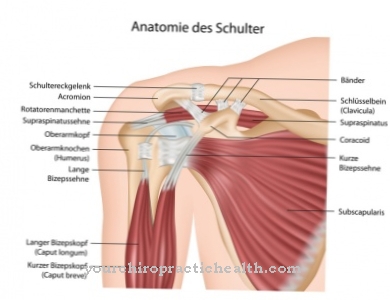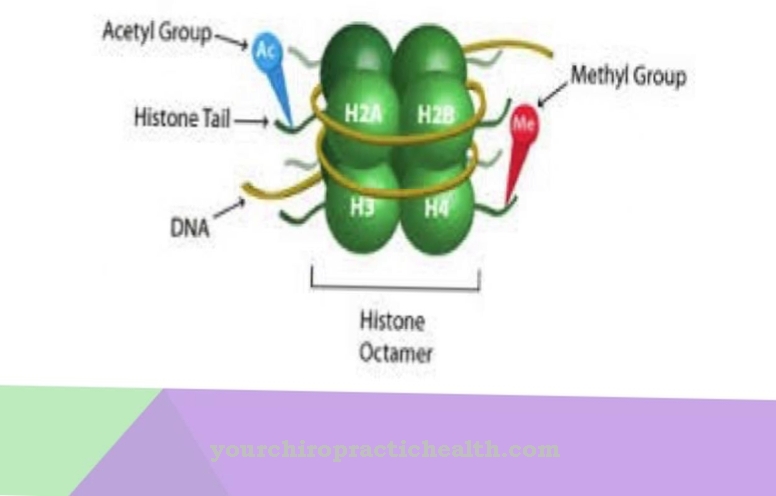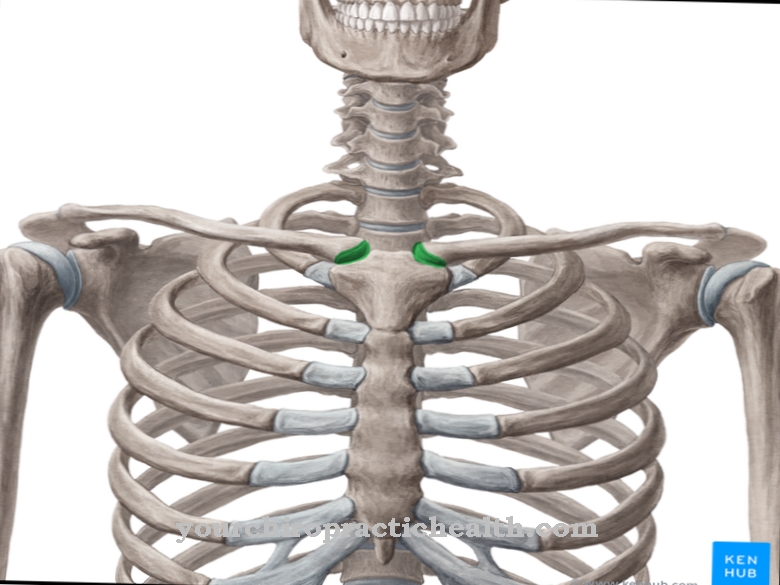As Bile duct are all parts of the body that the bile has to pass through during metabolism. A distinction is made between bile ducts located in the liver (intrahepatic bile ducts) and bile ducts located outside the liver (extrahepatic bile ducts). The bile is produced in the liver and then transported there via the bile ducts, transported to the intestine and from there into the gallbladder.
What is the bile duct?

The bile duct is an important part of our digestion. It delivers the bile to specific locations in the body: either for direct digestion in the duodenum or for storage in the gallbladder (vesica fellea).
First, the bile is produced in the liver and then enters the intestine through the bile ducts. The bile juice is a very viscous liquid that is mostly bright yellow in color. But it can also turn out greenish to brownish, especially if it has been thickened by storage in the gallbladder. The so-called bilirubin is responsible for the coloration of the bile.
The bile is essential for the digestion of fats that are ingested with food. This breakdown of fats takes place in the duodenum, where all fats are broken down (emulsified) in such a way that they can be further broken down by the pancreas and then used or excreted.
Anatomy & structure
Many small bile ducts run through the liver. The bile produced there is transported to the required places via these bile ducts. All small bile ducts within the liver open into two bile ducts, the right liver bile duct and the left liver bile duct.
In technical terms, these are referred to as the right hepatic duct and the left hepatic duct. These two bile ducts in turn open into a common bile duct, the so-called ductus hepaticus communis, at the porta hepatica.
Another bile duct is connected to the common hepatic duct, which leads directly to the gallbladder, the so-called cystic duct. Then the bile duct runs through the head of the pancreas and merges with the excretory duct of the salivary gland. From there, both continue to run into the duodenum.
Function & tasks
The bile duct with all its branches is responsible for the transport of the bile and is therefore an essential part of digestion in the human body. The bile is produced in the liver and has to be transported from there to the required places.
If bile juice is required for digestion, the liver produces the bile juice and the body transports the bile directly into the duodenum via the bile ducts. There, the bile breaks down all the fats that have been absorbed; this is the only way that the fats can be used by the pancreas.
Excess bile that is not needed for digestion reaches the gallbladder via a branch in the bile duct. The gallbladder is therefore the store for unneeded bile. In addition, there is a concentration of bile in the gallbladder, causing the bile to thicken.
If this bile juice is also required for digestion, the gallbladder excretes the bile juice into the bile duct by means of muscle contractions, from where it is transported on to the duodenum. Without the bile duct, the bile could not be transported to the specific places in order to ensure smooth fat digestion. The pancreas would not be able to break down the fat any more.
Illnesses & ailments
The bile duct and also the production, storage and breakdown of the bile fluid is often affected when there are diseases of the digestive system. It is not uncommon for the biliary tract to become blocked; this disease is called cholestasis. It manifests itself in those affected by an intolerance to fats. These are excreted in the stool because the body can no longer adequately digest fat. Such a disease can be caused by tumors.
Gallstones are also a disease that affects the bile duct. Gallstones are caused by an imbalance in the production of bile, which contains too few soluble substances. This leads to the formation of crystals or stones in the bile. Gallstones often do not cause any symptoms. However, if they lead to a blockage or become trapped, this can lead to severe pain. This can also lead to inflammation.
All clinical pictures can lead to posthepatic jaundice (icterus). This leads to yellowing of the skin, the mucous membranes and the conjunctiva of the eye. This disease should not be confused with common jaundice. This is caused by the virus and therefore has completely different causes. Jaundice is also not an independent disease, but only a symptom.













.jpg)

.jpg)
.jpg)











.jpg)